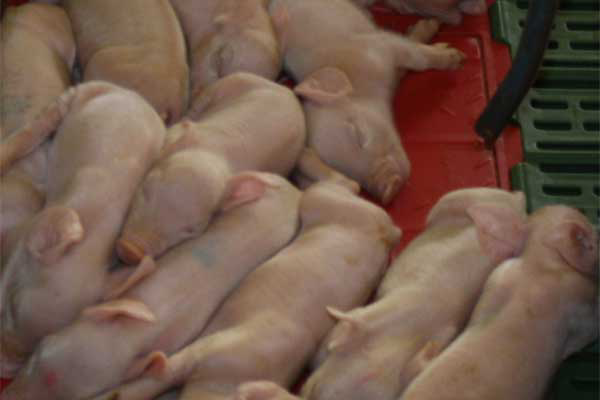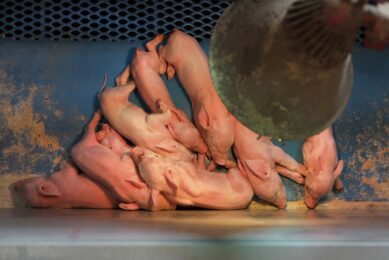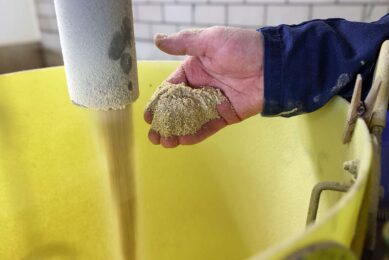Birth weight and genetics point to good growth

Pigs with a high birth weight and the right genetic background perform better and achieve higher results during both weaning, growing and finishing than pigs with low birth weights.
These were conclusions drawn by researchers at the Swine Innovation Centre Sterksel, part of Wageningen University, the Netherlands.
The researchers concluded that performance and financial results of growing and finishing can thus be improved by using sows and boars with a high genetic index for daily gain, feed intake and lean meat percentage of the growing and finishing pigs.
The scientists also concluded that by replacing sows, the genetic index can be used in the decision whether a sow should be replaced or not. In addition, producers can decide to use boars with a high genetic index. This is because birth weight was found to be highly repeatable – sows having heavy piglets will also have heavy piglets in the next litters.
High genetic growing and finishing pigs with a high birth weight were found to be delivered 8.6 days earlier to the slaughterhouse than low genetic pigs with a low birth weight. Therefore, they said, it would be is financially interesting to keep these pigs in different compartments.
The research was ordered by the Dutch Product Board for Livestock and Meat. Aim was to figure out what would be the effects of genetic background, birth weight and feeding strategy during the weaning period on the performance and financial results of piglets and growing and finishing pigs.
In total 624 weaned piglets (48 pens x 13 piglets) and 576 growing and finishing pigs (48 pens x 12 growing and finishing pigs) (Tempo Boar x (Dutch Landrace x Dutch Large White) sow) were used in the experiment. Pigs were followed from birth until delivery to the slaughterhouse during eight different.
The total research, with a summary in English, can be accessed here.
Related website:
Wageningen University
 Beheer
Beheer








 WP Admin
WP Admin  Bewerk bericht
Bewerk bericht